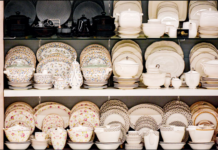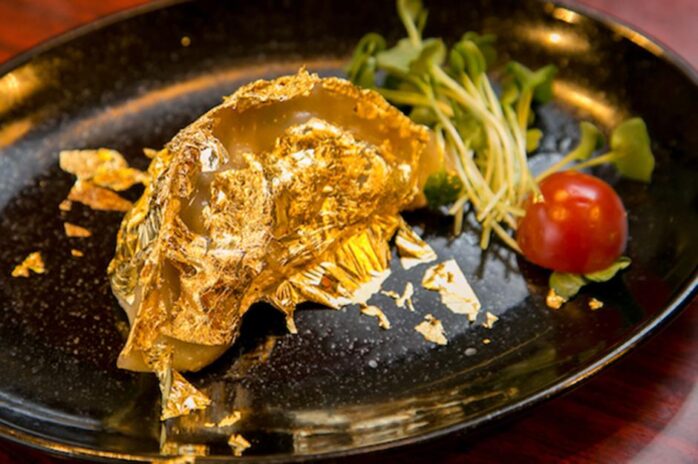
Alchemy, the mystical science of transformation, has fascinated humanity for centuries. This luxurious ingredient has the power to transform ordinary dishes into extraordinary culinary experiences. In this article, we’ll delve into the world of edible gold leaf, exploring its history, uses, and how you can incorporate it into your own cooking. While turning base metals into gold remains a fantasy, you can bring a touch of alchemy to your kitchen with the best edible gold leaf.
A Glimpse into History
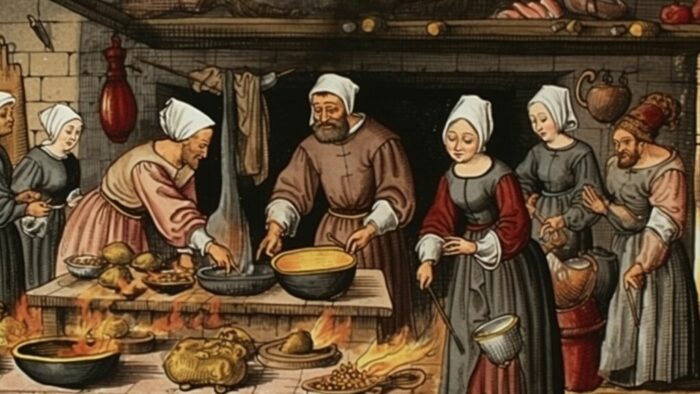
Edible gold leaf has a rich history that dates back to ancient civilizations. The Egyptians used it for medicinal purposes, while the medieval Europeans adorned their lavish feasts with it. Fast forward to today, and you’ll find edible gold leaf gracing the plates of Michelin-starred restaurants and celebrity events. It’s a timeless ingredient that transcends cultural and historical boundaries.
What is Edible Gold Leaf?
Edible gold leaf is a unique form of gold specifically manufactured to be safe for consumption. Unlike the gold used in jewelry or electronics, edible gold must meet certain purity standards to ensure it’s free from any harmful substances.
Manufacturing Process
The process of making edible gold leaf begins with high-quality gold bars or nuggets that are usually 22 to 24 karats. The gold is first melted down and then rolled into a thin ribbon. This ribbon is then further hammered into sheets that are often just a few micrometers thick. The thinness allows the gold to be easily broken apart and consumed, while also making it more cost-effective to produce.
Purity and Quality
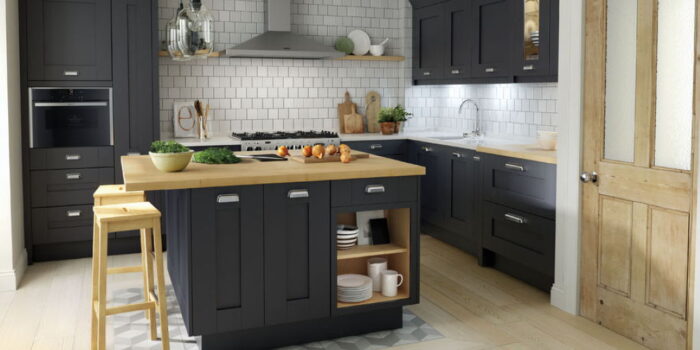
The gold used for edible gold leaf is typically 22 to 24 karats, which means it’s about 91% to 99% pure gold. The remaining percentage is usually silver or copper. These metals are also considered safe for consumption in trace amounts. It’s crucial to ensure that the gold leaf you’re using is certified for culinary use, as not all gold leaf products meet these stringent purity requirements.
Forms and Varieties
Edible gold leaf comes in various forms to suit different culinary needs:
- Sheets: These are ideal for covering larger surface areas, like cakes or sushi rolls.
- Flakes: Perfect for sprinkling over desserts or cocktails for a more subtle effect.
- Dust: This powdered form can be used to coat candies or mixed into drinks.
The Science of Safety
You might wonder, “Is it really safe to eat gold?” The answer is yes. Gold is biologically inert, meaning it passes through the digestive system without being absorbed. This makes it safe for consumption, as it doesn’t interact with the body’s processes.
Culinary Applications
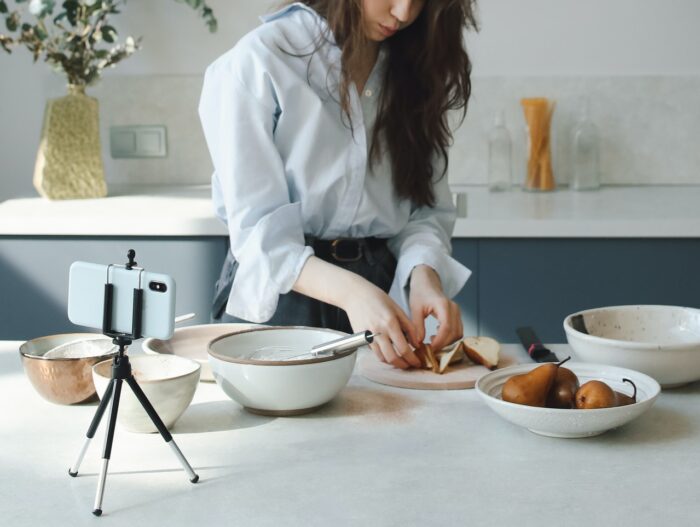
Edible gold leaf is incredibly versatile. It can be used in both savory and sweet dishes, from garnishing sushi to elevating a simple chocolate cake. Here are some creative ways to use edible gold leaf:
Savory Dishes
Golden Sushi: Add a touch of luxury to your sushi rolls by placing a small sheet of gold leaf on top.
Gold-Infused Risotto: Stir in some gold flakes into your risotto for a shimmering effect.
Golden Soup: Float a small piece of gold leaf on top of a creamy soup for a stunning visual impact.
Sweet Treats
Golden Macarons: Adorn your macarons with gold leaf for an elegant twist.
Gold-Dusted Brownies: Sprinkle gold dust over freshly baked brownies for a rich finish.
Golden Ice Cream: Place a sheet of gold leaf over a scoop of ice cream for a luxurious treat.
Pros and Cons
Pros
Visual Appeal: Gold leaf can make any dish look luxurious and elegant.
Novelty: It adds a unique element to your cooking, making it memorable.
Safe: As mentioned earlier, gold is biologically inert, making it safe for consumption.
Cons
Cost: Edible gold leaf is expensive, so it’s not ideal for everyday cooking.
Flavor: Gold leaf itself is tasteless, so it doesn’t add any flavor to the dish.
Tips for Using Edible Gold Leaf
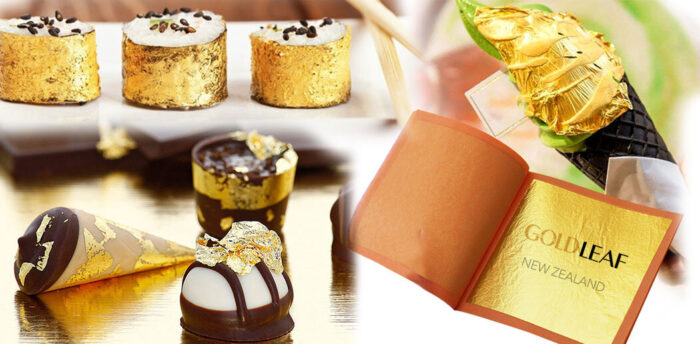
Storage: Keep it in a cool, dry place away from direct sunlight.
Handling: Use tweezers to place the delicate sheets onto your dishes.
Quality: Always buy from reputable sources to ensure you’re getting pure, safe-to-eat gold leaf.
Cultural Significance
Edible gold leaf isn’t just a modern culinary trend; it has roots in various cultures around the world. In Japan, gold leaf is often used in a form of sake called “Kinpaku,” believed to possess life-extending properties. In India, a silver or gold foil known as “Vark” is commonly used to coat sweets, signifying prosperity and purity.
During the Italian Renaissance, gold leaf was used in risottos served at lavish banquets. Understanding the cultural significance of edible gold leaf can deepen your appreciation for this luxurious ingredient and inspire you to use it in diverse ways.
Pairing Ideas
The use of edible gold leaf can elevate the experience of a meal, but what do you pair with such opulent dishes? Here are some suggestions:
Wine
Champagne: The effervescence of champagne complements the visual spectacle of gold leaf.
Chardonnay: Its buttery notes can pair well with gold leaf-adorned creamy dishes like risotto.
Cocktails
Martini: A gold leaf garnish can make this classic cocktail even more sophisticated.
Old Fashioned: A sprinkle of gold flakes can add a luxurious twist to this whiskey-based drink.
Non-Alcoholic
Sparkling Water: The simplicity of sparkling water allows the gold leaf to take center stage.
Herbal Tea: Gold leaf can add a touch of elegance to a calming cup of chamomile or mint tea.
Remember, the goal is to complement, not overshadow, the unique visual element that gold leaf brings to a dish.
Frequently Asked Questions (FAQs)

Is it vegan?
Yes, pure edible gold leaf is considered vegan as it is made from metal and doesn’t involve the use of any animal products.
Can it cause allergies?
Gold is biologically inert, meaning it’s unlikely to cause allergies. However, always consult with a healthcare provider if you have concerns.
Is it gluten-free?
Yes, edible gold leaf is gluten-free. It’s made from pure gold and doesn’t contain any wheat or gluten-based products.
How do I store it?
Edible gold leaf should be stored in a cool, dry place, away from direct sunlight to maintain its integrity.
By adding these sections, you’ll provide your readers with a well-rounded understanding of edible gold leaf, from its historical and cultural relevance to practical tips for enjoying it in modern culinary settings.
Conclusion
Edible gold leaf is more than just a culinary extravagance; it’s a form of kitchen alchemy that can transform your dishes into works of art. While it may not add flavor, its visual impact and the sense of luxury it imparts are unparalleled. So go ahead, unleash your inner alchemist and bring a touch of gold to your culinary creations.





